SvNMX Architects + Urbanists
In this interview, SvNMX Architects + Urbanists share their approach to regenerative design, which seeks to restore dunes, mangroves, and urban ecosystems, while also proposing nature-inspired solutions to protect coastlines and make our landscapes more resilient.
-
How did your love for landscapes and environmental rehabilitation begin?
Our love for landscapes and environmental rehabilitation stems from a fascination with the relationship between nature and built projects. For us, every place has its own history, conditions, and unique character, and working with them allows us to learn, respect their identity, and enhance their value. At SvNMX, we design landscapes that connect people with the natural environment. From community planning to small-scale interventions, we aim to generate ecological, social, and economic impact, always respecting the identity of the site and highlighting the unique character of the Mexican landscape at every scale.

Diseño integral y multidisciplinario / Integrated and multidisciplinary design
Fotografía / Photography: Pablo Izquierdo
-
What landscape strategies were proposed for the Sisal Regenerative Tourism Master Plan?
For the Sisal Regenerative Tourism Master Plan, landscape strategies were proposed based on the idea that regeneration principles involve creating spaces that not only provide experiences but are also ecologically and socially circular. Instead of imposing a design, the plan seeks to rehabilitate natural systems so that they function as a living, resilient infrastructure.
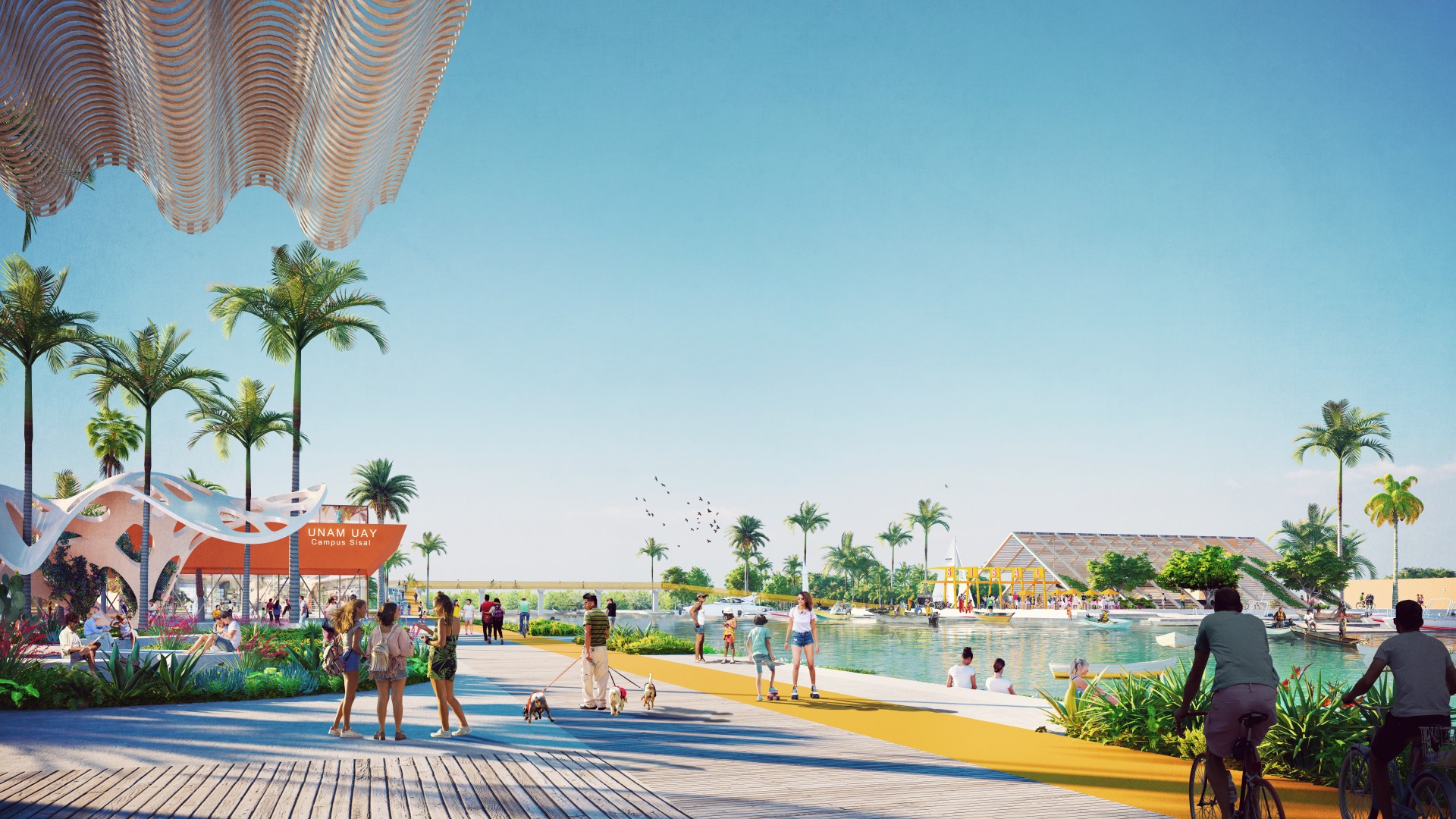
Vista Malecón, Sisal / View of the Sisal boardwalk
Fotografía / Photography: SvNMX Arquitectos + Urbanistas
The strategies focused on two key ecological actions:
Regenerating the mangrove ecosystem of the lagoon. Reforestation of mangroves damaged by aquaculture and recreational use was proposed, in order to create a biological bridge between development areas and inland water bodies.
-
Regenerating the coastal dune ecosystem. A landscape design was proposed to strengthen the dunes, thus increasing the natural protection of the coast against storms while also improving the habitat for local species.
CITA: Regenerating dunes strengthens natural protection and improves local habitats.
These actions were complemented by promoting edible landscapes and permaculture agriculture, intensifying native vegetation to reduce the heat island effect, and improving existing public spaces (the port and pier) under a placekeeping philosophy, which values and strengthens local identity.
-
What does the “systems-based regenerative design” you used for regenerating the former Salinas Bahamas industrial complex consist of?
The “systems-based regenerative design” applied at Salinas Bahamas represents an effort to rehabilitate an ecosystem damaged by a former salt extraction operation and restore its original function. Instead of focusing on isolated interventions, this approach identifies and addresses the root cause of ecological collapse: the alteration of the site’s hydrology caused by abandoned industrial infrastructure.
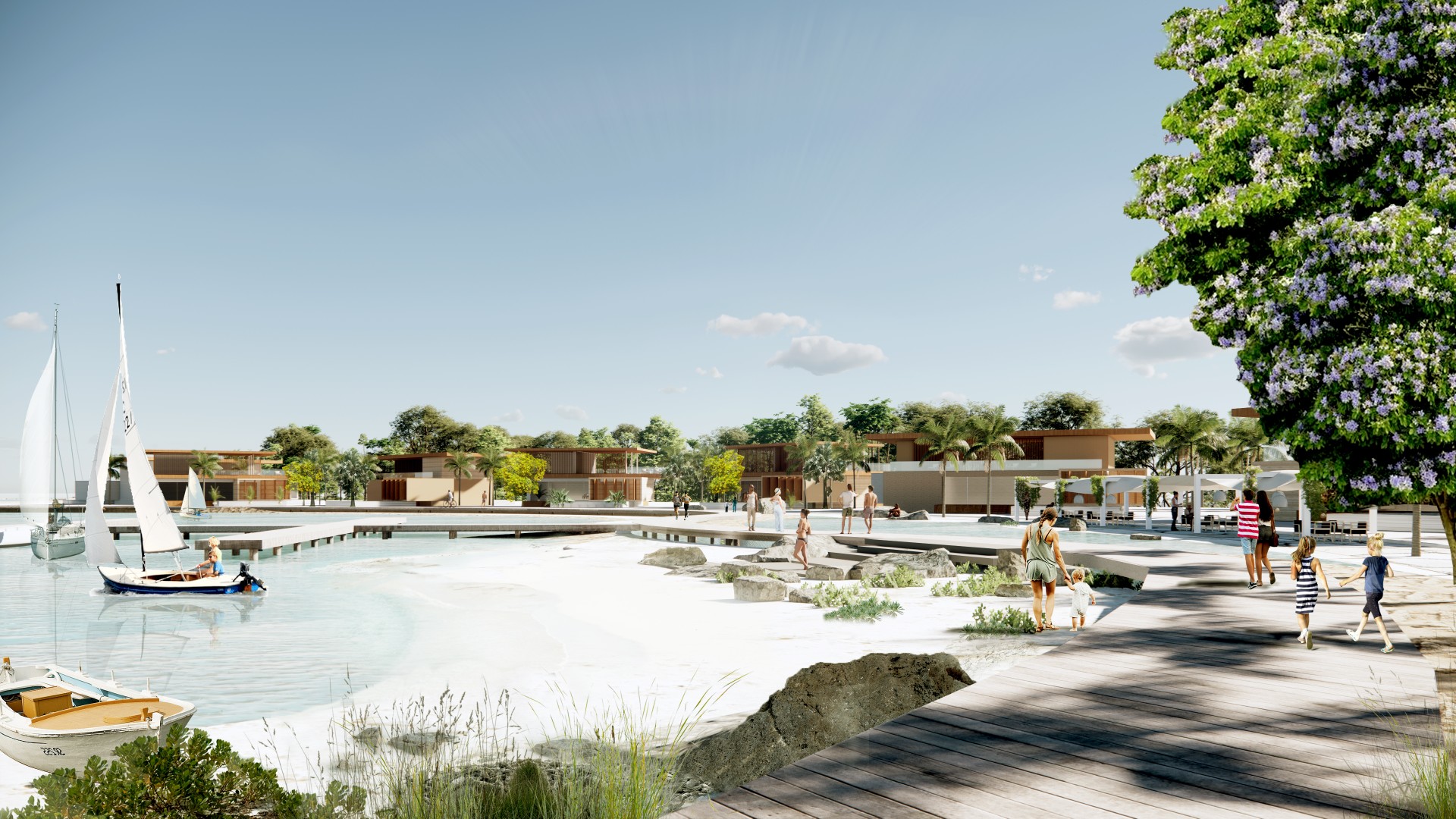
Acceso Galloway, Salinas / Galloway access, Salinas
Fotografía / Photography: SvNMX Arquitectos + Urbanistas
Our main strategy was to reactivate the system’s “engine.” This was achieved through catalyzing actions, such as creating new inlets to connect the lagoon with the ocean and opening up industrial berms that fragmented the landscape. By restoring the natural tidal flow, the system begins to heal itself. Water circulates again, hypersalinity affecting aquatic life is reduced, and, most importantly, currents passively distribute mangrove seeds throughout the site. This allows the vast mangrove forests—an ecosystem key to coastal resilience—to regenerate naturally and autonomously.
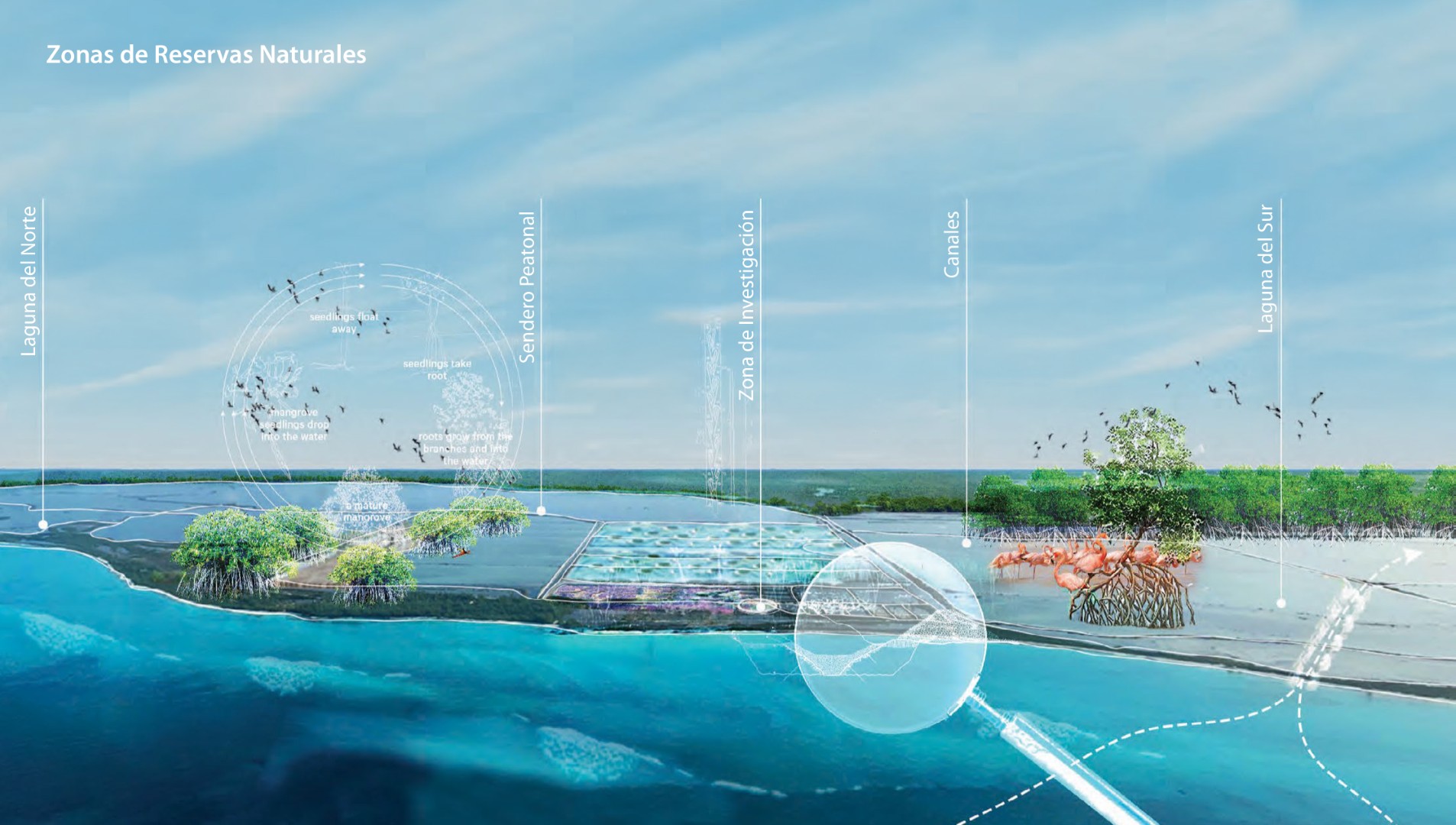
Parque Reserva Natural Salinas / Salinas Nature Reserve Park
Ilustración / Illustration: SvNMX Arquitectos + Urbanistas
-
Regarding the Acapulco Rehabilitation Project, and considering the impacts of Hurricane Otis, what landscape and natural infrastructure solutions were prioritized to act as barriers and natural buffers?
For the rehabilitation of Acapulco after Hurricane Otis, the project focused on natural infrastructure solutions, understanding that the event is part of a new normal in a world threatened by climate change. The approach was based on “co-designing with nature,” using water as the guiding thread for a new narrative of resilience and regeneration.
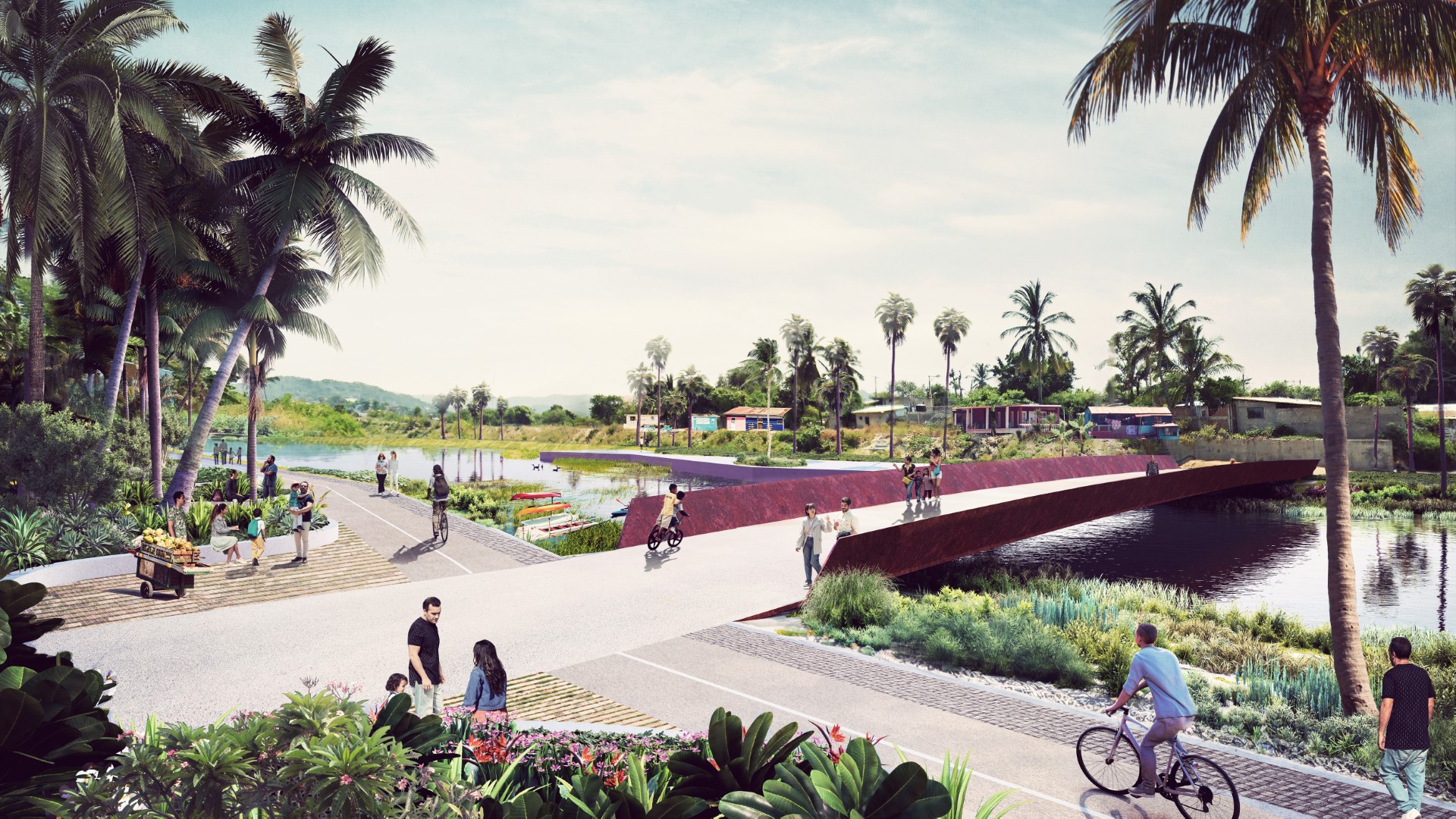
Paseo junto al Río, Acapulco / Riverside Promenade, Acapulco
Fotografía / Photography: SvNMX Arquitectos + Urbanistas
Several landscape tools were prioritized to mitigate risks. Reforesting hillsides was considered crucial to address the high risk of landslides and vegetation loss. In addition, sponge streets were proposed to tackle the saturated drainage system and reduce the risk of flooding through infiltration.
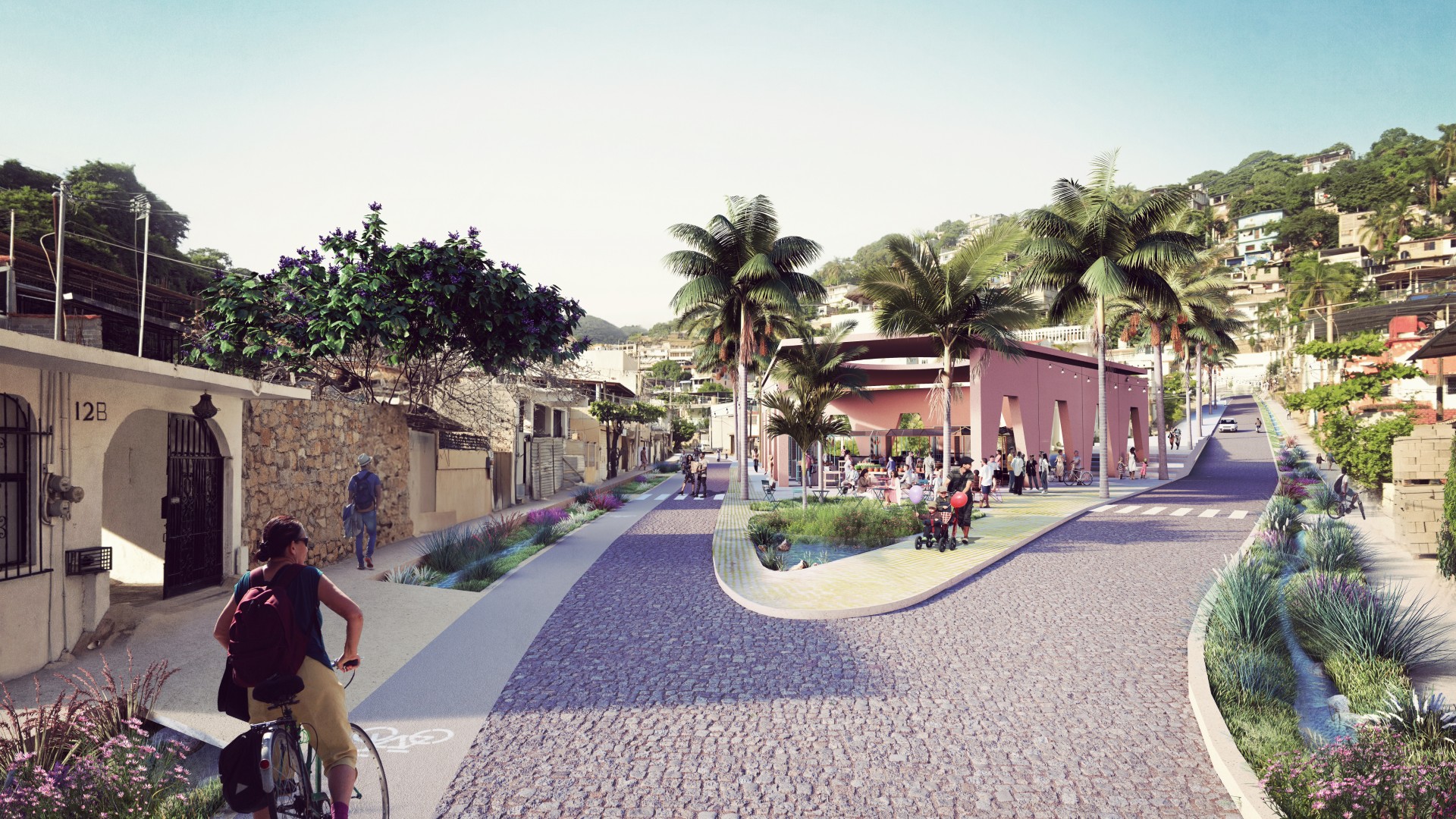
Vista de las Laderas, Acapulco / View if the Slopes, Acapulco
Fotografía / Photography: SvNMX Arquitectos + Urbanistas
Along the coast, vegetative barriers and wetland restoration were planned to protect the city from strong winds and rising seas. For the most vulnerable areas, protective dunes and artificial islands were proposed, aiming to buffer the impact of waves and protect the tourist and commercial area located below sea level.

Axonométricos de cuatro tipologías, Acapulco / Axonometric drawings of four typologies, Acapulco
Fotografía / Photography: SvNMX Arquitectos + Urbanistas






